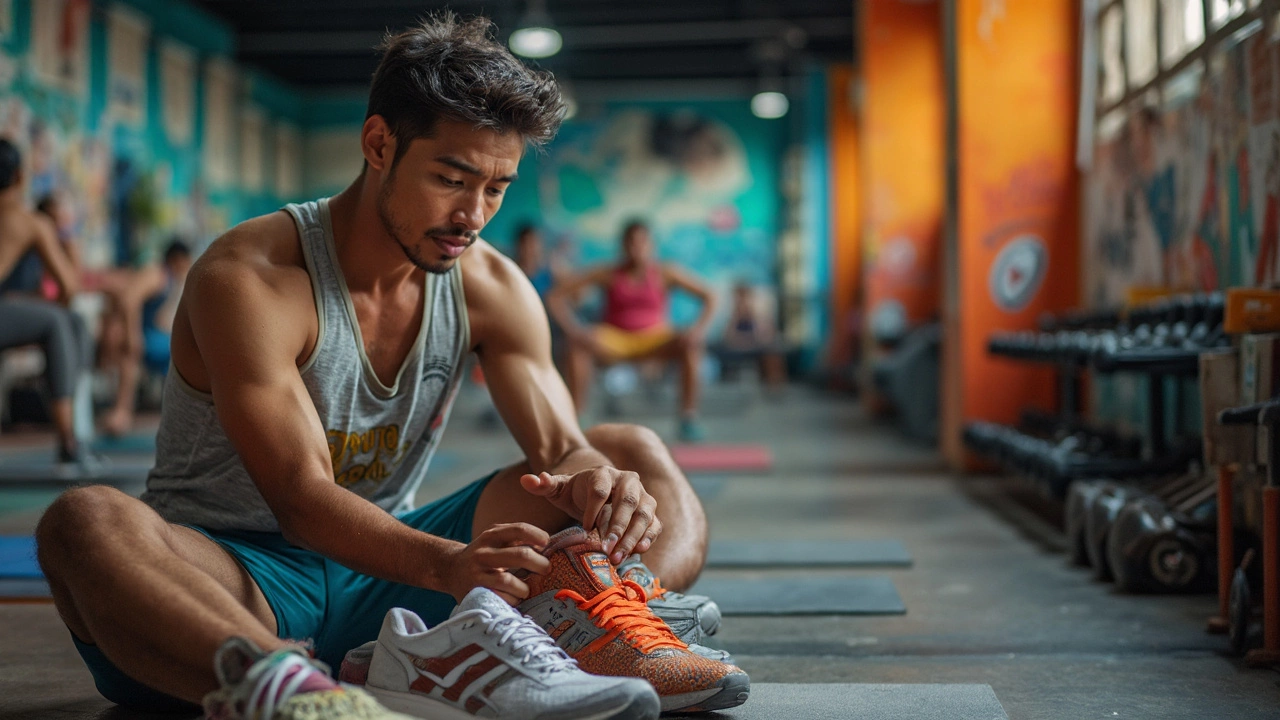Gym Shoes: How to Pick the Right Pair for Every Workout
When you step into the gym, the right shoes can make or break your session. Too loose and you slip, too tight and you lose power. Picking a pair that feels like an extension of your foot keeps you focused on reps, not blisters. Here’s a quick rundown to help you choose without the guesswork.
Fit Matters More Than Brand
Start by measuring your foot at the end of the day – swelling makes it more accurate. Slip your foot into the shoe; you should have a thumb’s width between your longest toe and the front. Walk around, pivot, and do a mock squat. If the heel lifts or the toe feels cramped, keep looking. A snug heel and room at the front are the sweet spot.
Match the Shoe to Your Training Style
Weight‑lifting shoes have a flat, firm sole that gives a stable base for heavy lifts. For cardio or HIIT, a responsive, slightly cushioned sole helps absorb impact. If you mix both, a versatile cross‑training shoe with moderate cushioning works fine, but expect some compromise on pure squat stability. Knowing your primary routine narrows the field fast.
Breathability is another practical factor. Mesh uppers let air flow, reducing sweat buildup and odor. Look for shoes with removable insoles – you can swap in a custom orthotic or fresh liner when they start to smell. Waterproof or water‑resistant uppers aren’t a priority for indoor gyms, but they’re handy if you train in a rainy basement.Don’t ignore the outsole pattern. A rubber tread with multidirectional grooves offers grip on gym floors, preventing slips during lunges or rope climbs. Some shoes use a sticky rubber compound specifically designed for gym surfaces; those are worth a splurge if you do a lot of lateral moves.
Now, about price. You don’t need a $200 pair for casual strength training. Mid‑range models (₹3,000‑₹6,000) give solid support and durability. Reserve higher‑priced options for serious lifters who need a locked‑in heel and extra stability. Read user reviews for real‑world wear patterns – they often reveal if a shoe wears out too fast on the forefoot or heel.
Maintenance keeps your shoes performing longer. After each session, tap out loose dirt, wipe the surface, and let them air dry. Avoid the dryer; heat can break down the foam. Rotate two pairs if you train frequently – this lets each pair recover its cushioning between workouts.
Quick checklist before you click ‘buy’:
- Correct size with thumb space at the toe
- Stable sole for lifts, responsive cushioning for cardio
- Breathable mesh or easy‑clean material
- Rubber outsole with good grip
- Price that matches your training intensity
Follow these steps and you’ll walk out of the store (or checkout page) confident that your new gym shoes will boost performance, not hold you back.
